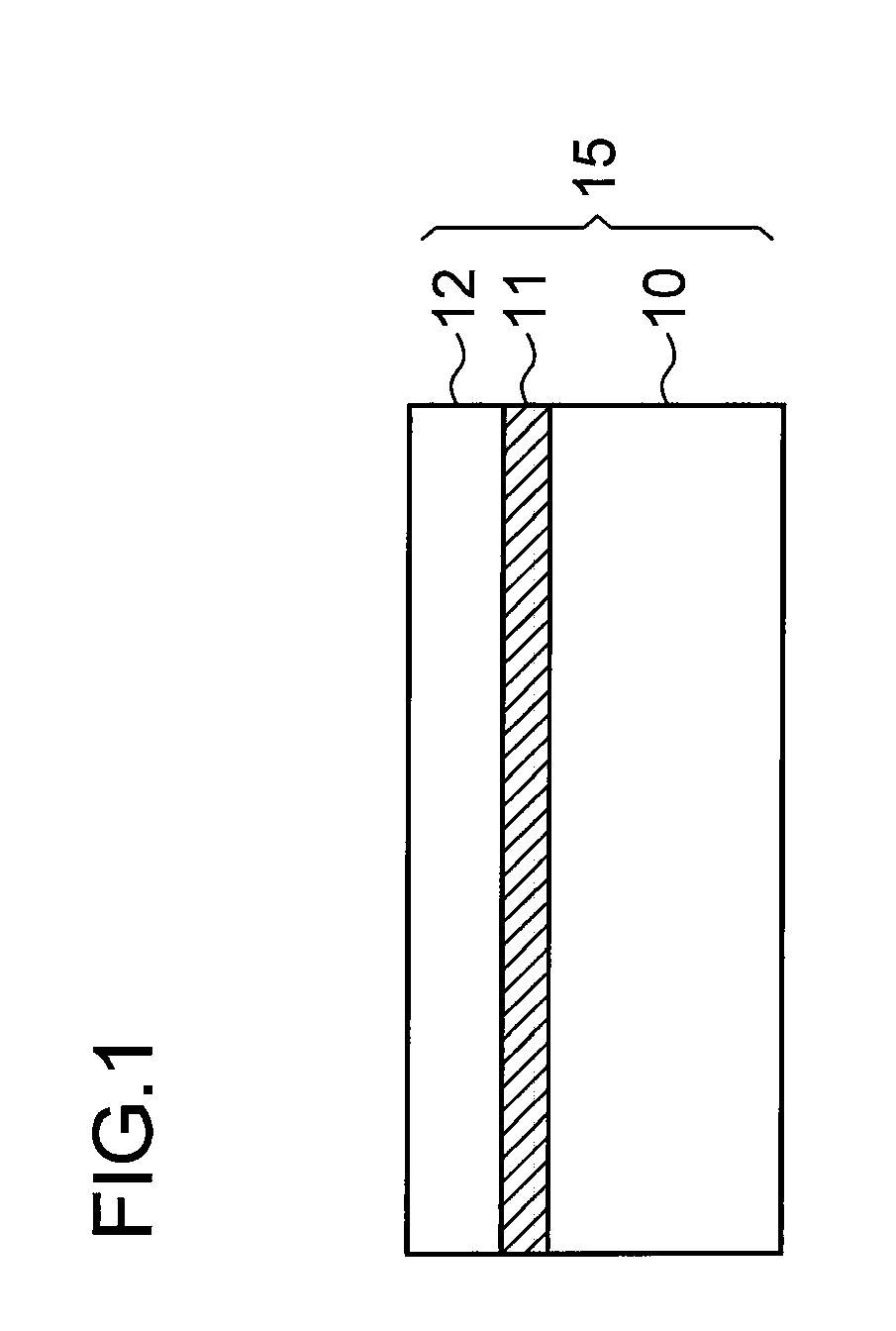Method of growing zinc-oxide-based semiconductor and method of manufacturing semiconductor light emitting device
a technology of zinc oxide and light-emitting devices, which is applied in the direction of single crystal growth, polycrystalline material growth, chemistry apparatus and processes, etc., can solve the problems of low productivity, low defect density, and low defect density, and achieve excellent single crystal quality and low defect density. , the effect of high performan
- Summary
- Abstract
- Description
- Claims
- Application Information
AI Technical Summary
Benefits of technology
Problems solved by technology
Method used
Image
Examples
embodiment 1
[0041]FIG. 1 is a cross-sectional view showing a zinc-oxide-based semiconductor crystal layer (hereinafter, simply referred to as a ZnO-based semiconductor layer) grown on a substrate 10 according to the present invention. More specifically, a ZnO layer 11 and a ZnO-based semiconductor layer 12 are grown on a sapphire substrate using the MOCVD method. Description will be made below taking as an example the case of growing MgxZn(1-x)O (0≦x≦0.68) as the ZnO-based semiconductor layer 12.
[0042]Note that the ZnO-based semiconductor may be another ZnO-based compound crystal, not being limited to MgxZn(1-x)O. For example, it may be a ZnO-based compound crystal having a portion of Zn (zinc) replaced by calcium (Ca), or a ZnO-based compound crystal having some of O (oxygen) replaced by selenium (Se), sulfur (S), tellurium (Te), or the like.
[0043]The MOCVD apparatus (not shown) used in crystal growth has a reaction container (chamber), and inside the reaction chamber, there are provided a sus...
embodiment 2
[0103]FIG. 9 is a cross-sectional view of a semiconductor light emitting device structure grown on the substrate 10 according to the present invention. More specifically, a light emitting operation layer (hereinafter also called an LED operation layer) 20 including an n-type ZnO-based semiconductor layer 21, a ZnO-based semiconductor active layer 22, and a p-type ZnO-based semiconductor layer 23 was formed on the with-grown-layer substrate 15 having the ZnO layer 11 and the ZnO-based semiconductor layer 12 formed thereon according to the above-described embodiment. Crystal growth conditions of the LED operation layer 20 were the same as those of the ZnO-based semiconductor layer 12 unless otherwise noted. That is, the crystal growth sequence was the same as that shown in FIG. 2, and using the same growth temperature, growth pressure, material gas, etc., as in the period (G2) of T=T9 to T10, the n-type ZnO-based semiconductor layer 21, ZnO-based semiconductor active layer 22, and p-t...
embodiment 3
[0129]FIG. 12 is a cross-sectional view of a zinc-oxide-based semiconductor crystal layer grown on the substrate 10 according to the present invention. More specifically, a first ZnO layer 11A, a second ZnO layer 11B, and a ZnO-based semiconductor layer 12 are formed on a sapphire substrate using the MOCVD method. Description will be made below taking as an example the case of growing MgxZn(1-x)O (0≦x≦0.68) as the ZnO-based semiconductor layer 12.
[0130]FIG. 13 shows a crystal growth sequence used in crystal growth by the MOCVD method. First, the A-plane sapphire substrate 10 was set on the susceptor in the MOCVD apparatus, and the reaction chamber pressure was adjusted to 10 kPa (kilopascals) (time T=T1).
[0131]Next, H2O (water vapor) as an oxygen source started to be supplied from the shower head to the substrate 10 at a flow rate of 640 μmol / min (T=T2). Further, the substrate 10 was raised in temperature by the heater from room temperature (RT) to 900° C. to perform the degassing o...
PUM
 Login to View More
Login to View More Abstract
Description
Claims
Application Information
 Login to View More
Login to View More - R&D
- Intellectual Property
- Life Sciences
- Materials
- Tech Scout
- Unparalleled Data Quality
- Higher Quality Content
- 60% Fewer Hallucinations
Browse by: Latest US Patents, China's latest patents, Technical Efficacy Thesaurus, Application Domain, Technology Topic, Popular Technical Reports.
© 2025 PatSnap. All rights reserved.Legal|Privacy policy|Modern Slavery Act Transparency Statement|Sitemap|About US| Contact US: help@patsnap.com



